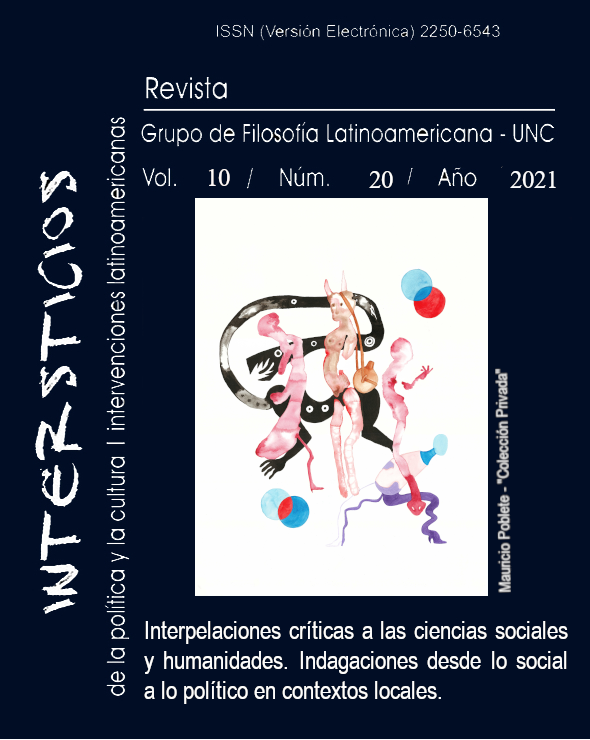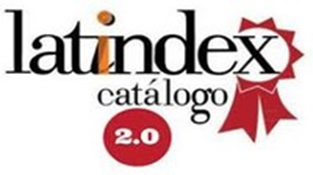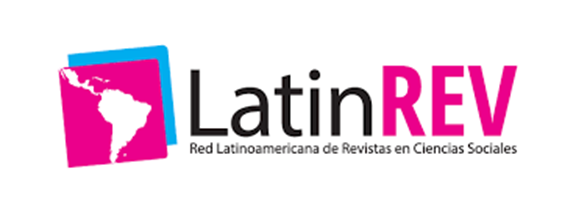Decolonize the present from the past. Critical epistemes for a rereading of indigenous history
Keywords:
Indigenous history, Colonial oblivion, Andean memoricide, TinkunacoAbstract
The work is built from two searches and questions. On the one hand, we are interested in the way in which the Regional History of the NOA has approached the study and narratives of our indigenous past, specifically a historical and ritual event such as the celebration of Tinkunaco in the province of La Rioja, and the disputes of meanings that it mobilizes.
The second question asks about other ways, local and native, in which indigenous societies experience / lives / narrate their pasts and memories. In this direction we approach some proposals of indigenous intellectuals (regimes of historicity, native epistemes, worldview) that we call “native” perspectives of history.
From this dual approach, we make critical interpellations to the social sciences and the humanities regarding the place of authority of History as a colonial discipline and of native epistemes as a possibility of decolonizing knowledge.
Downloads
References
Bazán, R. A. (1995). Historia del Noroeste Argentino. Buenos Aires: P. Ultra, Ed
Bazán (n.d.). El Método de la historia Regional. Revista, Fundación Cultural, 7–40. Retrieved from Recuperado de http://www.fundacioncultural.org/revista/nota7_40.html
Boccara, G. (2012). ¿Qué es lo “etno” en etnohistoria? La vocación crítica de los estudios etnohistóricos y los nuevos objetos de lucha. Memoria Americana, 20. Enero. 37–52.
Chakrabarty, D. (2008). Al margen de Europa. Pensamiento poscolonial y diferencia histórica. Barcelona: Tusquets.
Condori Mamani, C. (1992). Los aymaras frente a la historia: Dos ensayos metodológicos. Bolivia: Chukiyawu, Ed.
González, Joaquín Víctor. (2001). Mis montañas. Biblioteca Virtual Miguel de Cervantes. Recuperado de http://www.cervantesvirtual.com/obra-visor/mis-montanas/html/
Hartog, F. (2007). Regímenes de Historicidad. Presentismo y experiencias del tiempo. México: Universidad Iberoamericana.
Lajo, J. (2006). Qhapaq Ñan. La ruta Inka de la sabiduría. Ecuador: E. A. Yala, Ed
Lema, V., & Pazzarelli, F. (2015). Memoria fértil. Crianza de la historia en Huachichocana. Novo Mundo / Mundos Novos, 18.
Lira, J. y Mejía Humán, M. (2008). Diccionario quechua-castellano, castellano-quechua. Editor Universidad Ricardo Palma, Editorial Universitaria.
Lorandi, A. M. (1998). Los diaguitas y el Tawantinsuyu: Una hipótesis de conflicto. En La frontera del Estado inca. Ecuador: Editorial Abya Yala.
Lorandi, A. M. (2000). Las rebeliones indígenas. En Nueva Historia Argentina. Buenos Aires: Ed. Sudamericana.
Mandrini, R. J. (2013). La historiografía argentina, los pueblos originarios y la incomodidad de los historiadores. Quinto Sol. 11. 19–38.
Molinié, A. (1985). Buscando una historicidad andina: una propuesta antropológica y una memoria hecha rito. Paris: Journal de La Societe Des Americanistes.
Oguic’, Sofía Rufina (2004). El Tinkunaco. La fiesta del encuentro. Ediciones el Trabajador, Buenos Aires.
Ponce, J. (2009). El Tinkunaco ¿Encuentro o encontronazo? Nexo ediciones, La Rioja.
Rivera Cusicanqui, S. (2010). Ch’ixinakax utxiwa. Una reflexión sobre prácticas y discursos descolonizadores. Buenos Aires: Tinta limón.
Rivera Cusicanqui, S. (2015). Sociología de la Imagen. Miradas ch´ixi desde la historia andina. Buenos Aires: Tinta Limón.
Wilde, G. (2016). Religión y poder en las misiones guaraníes. Buenos Aires: SB ed.
Yampara Huarachi, S. (2011). Cosmovivencia Andina. Vivir y convivir en armonía integral –Suma Qamaña. Revista de Estudios Bolivianos, 18. Retrieved from http://bsj.pitt.edu
Young, Robert, C, J. (2008). Nuevo recorrido por (las) Mitologías Blancas. En Sandro
Zaffaroni, A., Chaile, F., Lajo, J., & Choque, G. (2011). Kakanchic pájaro de las tormentas: la resistencia del pueblo Quilmes. Salta: Edición de autor.
Downloads
Published
Issue
Section
License

This work is licensed under a Creative Commons Attribution-NonCommercial-ShareAlike 4.0 International License.
Authors who have publications with this journal agree to the following terms:
a. Authors will retain their copyright and grant the journal the right of first publication of their work, which will simultaneously be subject to the Creative Commons Attribution License that allows third parties to share the work as long as its author and first publication in this journal are indicated.
b. Authors may adopt other non-exclusive license agreements for distribution of the published version of the work (e.g., deposit it in an institutional telematic archive or publish it in a monographic volume) as long as the initial publication in this journal is indicated.
c. Authors are allowed and encouraged to disseminate their work through the Internet (e.g., in institutional telematic archives or on their web page) after the publication process, which may produce interesting exchanges and increase citations of the published work (see The effect of open access).











